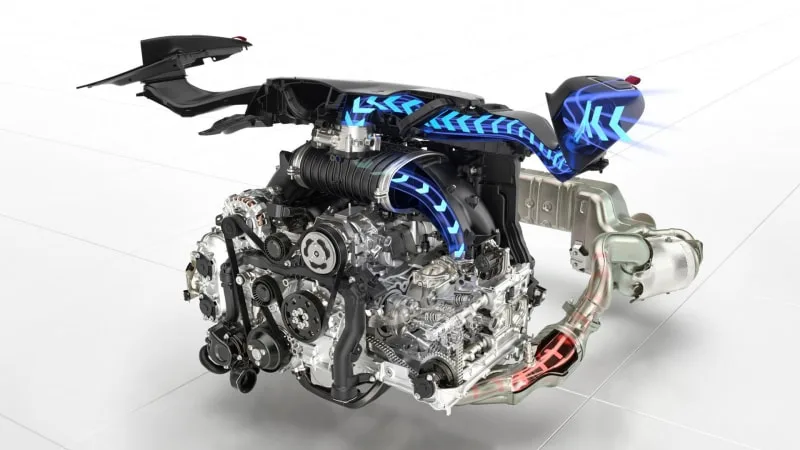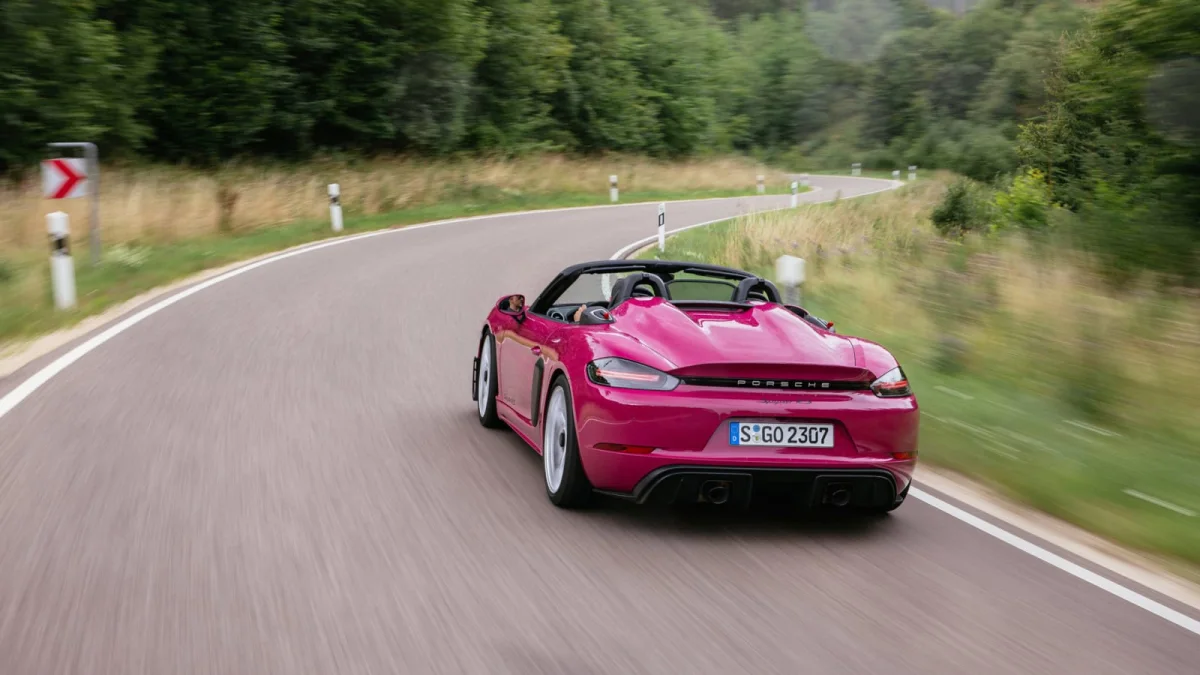ÖDENWALDSTETTEN, Germany – Someday, when all the new cars waft silently along on electricity, high upon the list of internal combustion cars we actually miss will be the Porsche 718 Spyder RS. Its 4.0-liter naturally aspirated boxer six-cylinder keeps revving and revving and revving until the center-mounted tach reads 9,000. It’s already produced 493 horsepower by that point, summoned by throttle response virtually unmatched in an era dominated by forced induction.
Then there is the sound. Good grief, the sound. Mounting an engine a few inches from your kidneys is one thing, as is the case in every 718. Placing an extra set of air intakes a few inches from your ears is quite another, but that’s also the case in the Cayman GT4 RS. The Spyder RS goes even further by removing the glass and metal that separates your ears from those intakes in the GT4 RS. Even with the top on the Spyder RS, there can still be nothing between those intakes and your fragile cochlea … but more on that unique roof later.
Many cars sound better on the outside than behind the wheel thanks to exuberant exhausts and abundant sound deadening. The Spyder RS? It’s hard to even hear the dual-note exhaust over the engine. The shrieking wail that’ll have you leaving a pack of ear plugs in the glovebox for passengers (not an exaggeration, this is definitely a good idea), is so raw, invigorating and unique that the exhaust is more like a bass player adding some deeper background tones to the overall song.
The noise is also why you buy the 718 Spyder RS. If you want to go really fast and take full advantage of the 718’s mid-engined layout, the Cayman GT4 RS is the sharper tool. If you want an experience, regardless of where you’re going or how fast you’re traveling, the Spyder is the choice. Roof on, roof off, roof kind of on and off … there’s even a versatility to that experience. But again, more on that roof later.
The engine making all that fuss is shared with the GT4 RS as well as the 911 GT3 Cup racing car: a screaming naturally aspirated 4.0-liter flat-six good for 493 hp, 331 pound-feet of torque and a 0-60 time of 3.2 seconds. While that output is slightly less than the 911 version, it’s only because of the difference in exhaust length due to the mid-engine placement. The seven-speed PDK automatic is obligatory, and since you’re already asking.
“No, it’s not coming with a manual,” said Andreas Preuninger, the director of Porsche’s GT model line. “Why not? Because there’s no manual available that we can mount in the (718) platform that can handle the RPM and the torque of the engine. It’s not because we don’t want to, it’s that there’s nothing there.”
Thankfully, PDK is seemingly powered by some sort of mind-reading device, because it so expertly downshifts exactly when and by how many you would that the lovely paddle shifters are basically ornamental.


There’s more here than just a rock concert worth of noise blasting forth from six angry cylinders, though. Compared to the GT4 RS, the Spyder has slightly softer suspension tuning courtesy of lower spring rates and damper rates. Porsche says that’s for the more grand-touring nature of convertibles, but one would imagine it’s also because softer suspension tuning is usually an engineering necessity when lopping off a full roof. Not that anyone would call the Spyder RS ride “soft.” Even on southern Germany’s lovely roads, the odd blemish or manhole cover revealed firm reactions that might get tiresome during a lengthy drive on American pavement. Honestly, I wouldn’t mind this powertrain with a less hardcore everything else.
What is everything else? Well, the GT4 and Spyder RS receive a specific suspension system that’s adjustable and whose various parts are connected to the body via ball joints – a feature, like much of this car, shared with the new GT3 and Porsche race cars. The standard adaptive suspension has two settings, both of which as described above, are firm. That suspension is lowered a full 1.2 inches compared to the 718 Boxster


